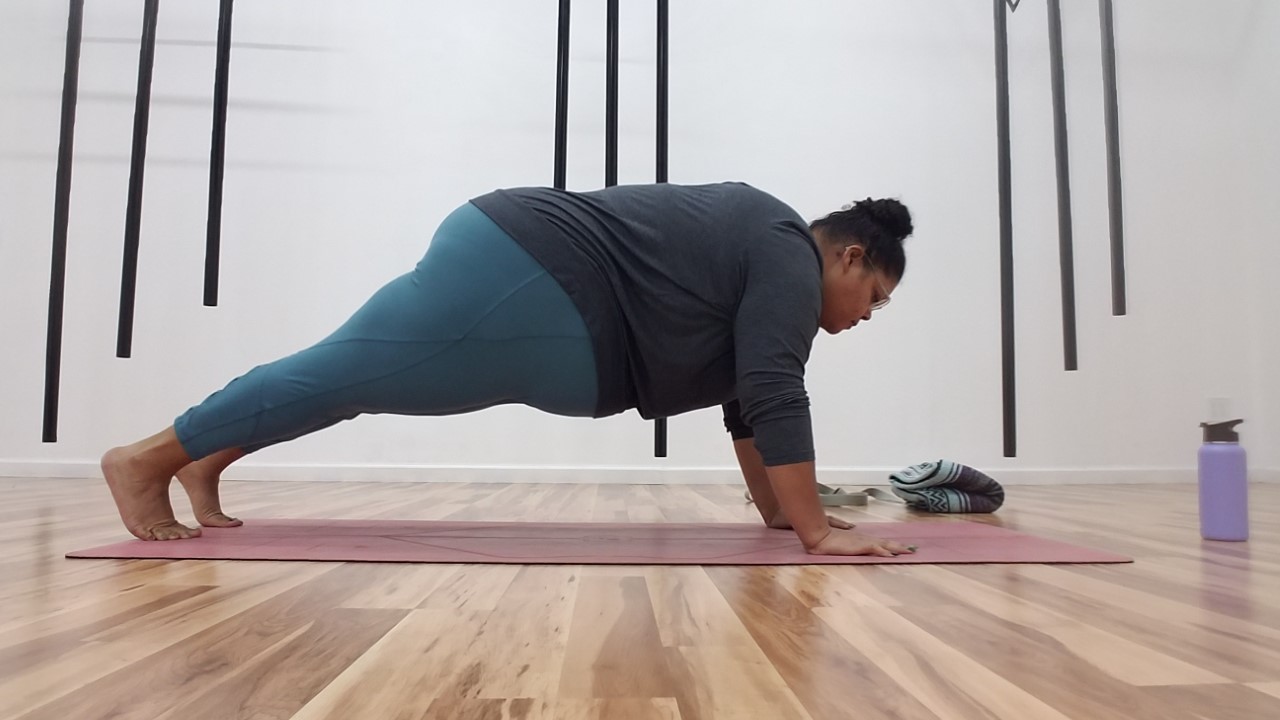The common yoga transition may be the foundation of many western practices, yet a vinyasa flow is anything but basic.
If you’ve ever looked around cluelessly while a yoga instructor has called out movements to an obedient class, you’re not alone. Sometimes, the postures can be hard to get to grips with and, if you don’t know the names for poses (in either Sanskrit or the western translations), it’s easy to get lost.
You might be wondering what a vinyasa flow is. But the chances are, if you’ve taken part in a yoga class before, you’ll have probably done one. It doesn’t matter if it was via Zoom, on YouTube or, back in the good old days, in a studio, if your yoga was dynamic, it most likely would have included this foundational move.
What is a vinyasa flow?
“Vinyasa really just means linking breath with movement,” explains yoga teacher Jessica Rihal. “Through western popularisation, it kind of has its own meaning now. We think of vinyasa as a specific style of movement, rather than what it means in Sanskrit.”
That style is a very dynamic movement pattern “that gets your blood pumping, moving up and down with every breath you take,” according to Jessica. While ‘vinyasa’ can be the generic reference for a faster-paced yoga class, in your practice a teacher most likely refers to a vinyasa flow as the sequence that takes you from a downward facing dog into a high plank, through a chaturanga (yogi press-up), into upward facing dog and back to your starting position. Phew.
This common transition isn’t just popular because it’s a great way to easily move between poses, but because it’s a brilliant way to strengthen and stretch the full body while maintaining proper breath. It’s accessible for beginners to get to grips with the physical and mental elements of the practice, while it can be modified to challenge the more experienced yogis.

What are the benefits of a vinyasa flow?
Any physical postures in yoga are called asana, “and we think the real purpose of asana in yoga is to quiet the mind so that you can sit in meditation. Have you ever been exhausted and had that moment where you can’t really do anything, your mind is clear and your body is heavy? Asana is meant to do that, to withdraw you from the senses around you,” Jessica explains.
While all yoga should be focused on connecting the breath with your movement, the benefit to a traditional vinyasa flow is that the up-down movements make it simpler to fall into a natural rhythm with your breath and reap the meditative element of yoga.
As for the physical benefits? Jessica loves “finding joy in vinyasa’s little pattern of movement. I feel like it has everything to keep your body mobile and strong, as long as you’re practicing them properly. I actually like the intensity of down dog and chaturanga and the rest.”
How to properly do a vinyasa flow
When it comes to vinyasa, the most important thing to remember is that breathwork. That doesn’t mean fly through the movements while panting, but rather slow the movements down to match your breathing.
“I think that everything can benefit from being slowed down,” agrees Jessica. “Everything is harder when it’s slower and you’re more aware of your body. And remember that there’s a difference between pain and difficulty. It is part of yoga to sit in those strong sensations and observe how our body and our minds react to discomfort.”
How to do a vinyasa flow
Inhale as you come into a high plank position. Place your hands firmly on the floor with your shoulders directly over your wrists and place your legs out straight behind you. Engage your core by pulling your belly button in towards your spine.
Exhale to lower your chest to the floor. You can do this by performing a full chaturanga, pressing your elbows in to your ribs as you lower your body to the ground, or by dropping your knees to the ground first before lowering your chest.
Inhale as you come into upward facing dog. Point your toes, squeeze your glutes and pull your shoulder blades together to lift your knees, thighs and hips off the floor – this should be an active stretch rather than just an arch through the spine. If upward facing dog feels too intense, take a cobra pose by lifting your hands, and chest off of the floor.
Exhale as you push into downward facing dog. Send your hips to the ceiling and press into all 10 fingers as your chest pulls towards your thighs.
Inhale to come back into high plank position.
Follow @StrongWomenUK on Instagram for the latest workouts, delicious recipes and motivation from your favourite fitness experts.
Source: Read Full Article
